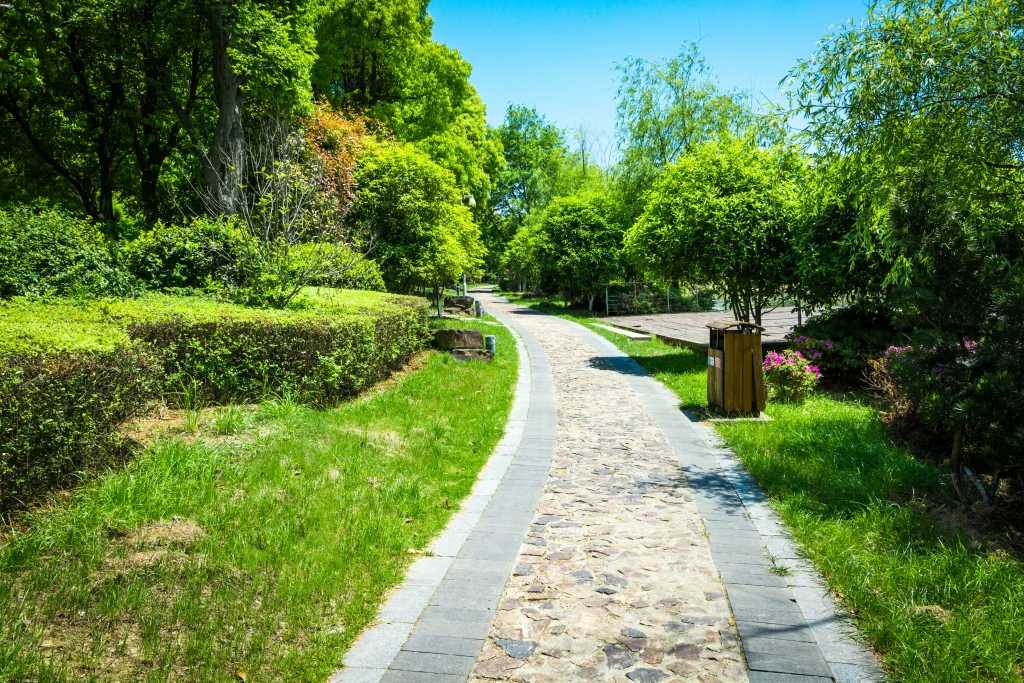Choosing the right watering system is essential for maintaining a healthy garden. The decision often comes down to drip irrigation vs sprinklers, 2 popular methods with distinct benefits depending on your landscape’s needs.
While sprinkler systems provide broad, even coverage for larger areas, drip irrigation offers targeted watering to individual plants, improving water efficiency and reducing waste. Understanding the differences between these systems can help you optimize your lawn care routine, conserve resources, and keep your yard looking its best.
In this article, we’ll break down the pros, cons, and best applications of drip irrigation vs sprinklers to help you make an informed decision. For homeowners in Denver, Mile High Lifescape is a trusted expert in sprinkler installation and complete lawn care services, ensuring your lawn receives the right amount of water at the right time. Ready to find the perfect watering solution for your yard? Let’s get started!
What Is Drip Irrigation?
Definition and Function
Drip irrigation is a water system that carefully delivers small amounts of water directly to plants over a long period of time. It uses pipes, tubing, and special sprinklers or emitters. Sometimes it’s called trickle irrigation or micro-irrigation.
This method is much more efficient than traditional watering systems like flood irrigation or center pivot irrigation. It can help save up to 70% more water and cut energy costs by 50%. Drip irrigation works close to the ground, which helps reduce water loss from evaporation and prevents runoff. The water is pushed through the pipes and comes out slowly at the right spots, giving your plants just the right amount of water when they need it.
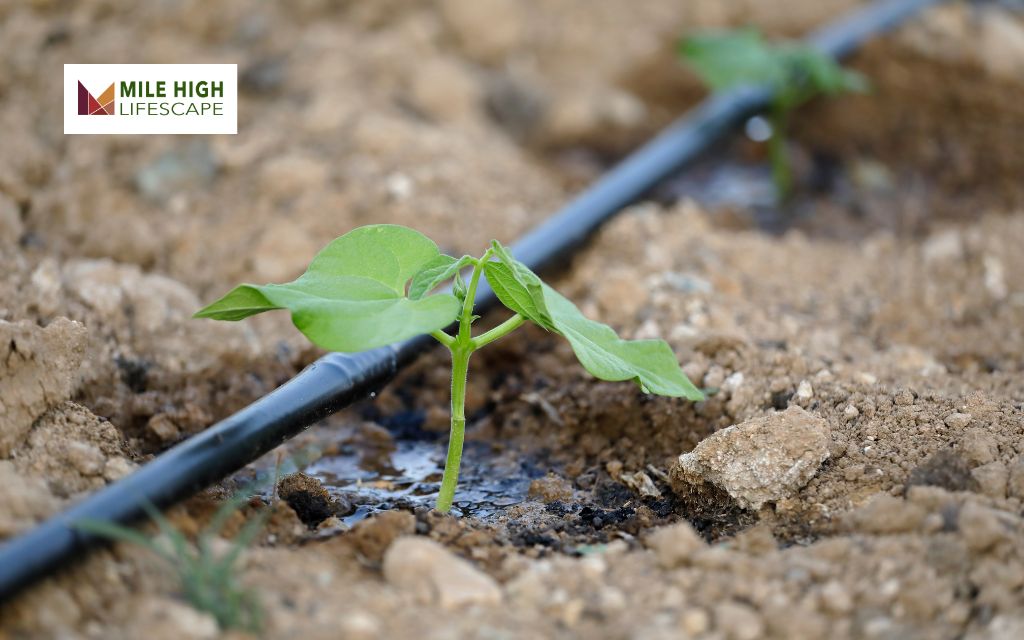
Types of Drip Irrigation Systems
Drip irrigation systems are designed to save water, improve efficiency, and help plants grow better while being better for the environment. There are four main types of drip irrigation systems:
- Surface Drip Irrigation: This system uses pipes or tubing placed on the soil’s surface. Small drippers release water directly onto the soil, making it perfect for crops planted in rows or orchards.
- Subsurface Drip Irrigation: In this system, pipes are placed under the soil surface, with water being released below ground. This system is also great for row crops and orchards, providing water directly to the roots.
- Inline Drip Irrigation: Here, drip emitters are built right into the tubing or pipes, releasing water directly onto the plants. This system works well for gardens and landscaped areas.
- Micro Sprinkler Irrigation: Small sprinklers attached to tubing or pipes spray water in a fine mist. This system is ideal for vegetable gardens and small orchards, giving a gentle watering option for plants.
What Are Sprinkler Systems?
Definition and Function
A sprinkler system is a way to water plants, lawns, or crops by spraying water over a large area using powerful jets. The system usually includes pipes and sprinklers that are placed above the ground. There are different types of sprinklers, such as stationary, rotating, or oscillating sprinklers, each designed to spray water in different ways.
One big benefit of using a sprinkler system is that it can water a large area with little effort. It’s easy to set up and you can adjust it to water different parts of your yard or garden, depending on the needs of the plants. Sprinklers are often used in homes, businesses, and farms.
Types of Sprinkler Systems
- Stationary Lawn Sprinkler: It has a base with a tall pole and a sprinkler head on top that sprays water in a circle. The best part is that it stays in one place and automatically turns on and off as needed, making it easy to use.
- Rotary Lawn Sprinkler: A rotary lawn sprinkler spins around a central point, using a motor to move the sprinkler head. It’s great for watering large areas of grass and comes in both electric and manual versions, depending on your preference.
- Oscillating Sprinklers: An oscillating sprinkler moves back and forth, spraying water in a wide, fan-like pattern. It’s perfect for watering a large lawn or garden area evenly and efficiently.
- Pulsating Lawn Sprinkler: A pulsating lawn sprinkler uses water pressure to make the sprinkler head move in a pulsing action. This helps water your lawn more evenly and ensures a thorough watering.
- Travelling Lawn Sprinkler System: A travelling lawn sprinkler moves back and forth across your lawn, covering a large area. It’s perfect for people who want to water their lawn automatically without standing outside to do it.
- Inground Irrigation Sprinkler System: An inground irrigation system is installed below the surface of the ground and can water your lawn efficiently. These systems can be automatic or manual, making them a great choice for evenly watering your lawn without having to move sprinklers around.
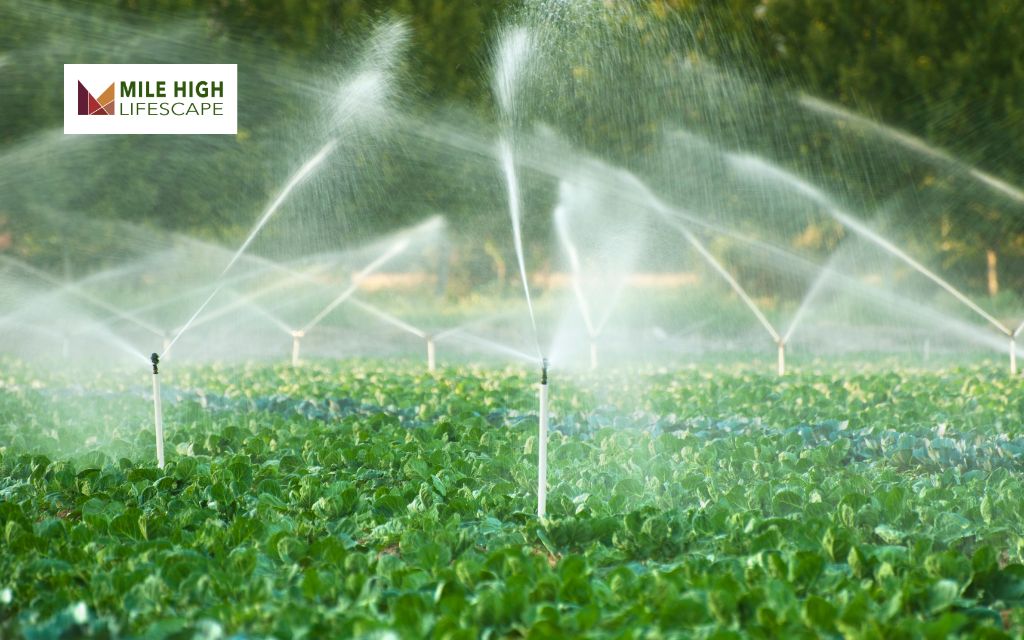
Drip Irrigation vs Sprinklers: Key Differences
Choosing the right watering system is really important for keeping your garden healthy and looking great. When deciding between drip irrigation vs sprinklers, there are a few things to think about, like how much water you’re using, how easy it is to install, and the environmental impact. Let’s take a look at the main differences between the 2 systems.
Water Efficiency
How much water is used efficiently is one of the most important things to consider when choosing between drip irrigation and sprinklers.
- Drip Irrigation: Drip irrigation is super efficient because it delivers water directly to the roots of plants using tubes and small emitters. This method wastes very little water and saves about 90% of it, which is great for areas that need to save water, like dry climates.
- Sprinklers: Traditional sprinklers are less efficient, with about 65-75% of the water being used properly. A lot of water can be lost through evaporation or blown away by the wind.
Installation and Maintenance
It’s important to know how easy or hard it will be to set up and take care of each system.
- Drip Irrigation: This system needs more planning because the tubes have to be placed close to the plant roots. But the good news is that it’s easy to fix if something breaks. You just replace the small part of the tube that’s not working.
- Sprinklers: Sprinklers are easier to install, especially for big lawns, but the heads can get clogged or broken sometimes, so they need more regular maintenance.
Coverage and Application
What type of area you need to water is another thing to think about.
- Drip Irrigation: This system is perfect for smaller areas like gardens, flower beds, or around shrubs, where water needs to go right to the roots.
- Sprinklers: Sprinklers are great for lawns or bigger areas where you need the water spread evenly across a wide surface.
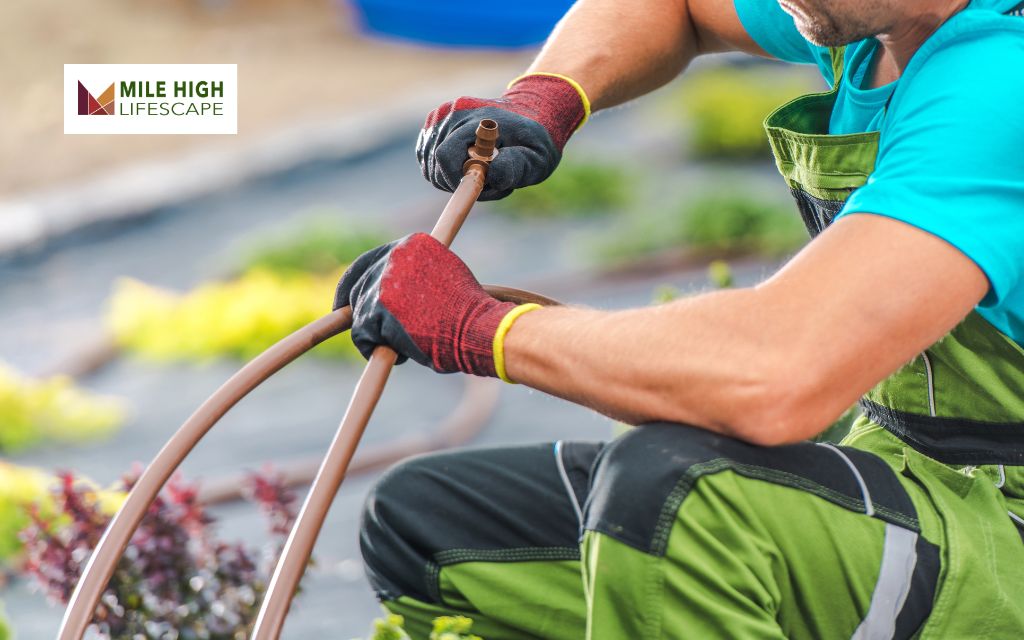
Cost Considerations
How much you want to spend is something to think about when picking your system.
- Drip Irrigation: It costs more to set up because you need to buy the tubing and other parts, but it will save you money over time by cutting down your water bills.
- Sprinklers: Sprinklers are cheaper to set up at first, especially for large areas, but they may cost more in water bills if they’re not used carefully.
Environmental Impact
If you’re worried about the environment, it’s good to think about how each system affects it.
- Drip Irrigation: This method is very eco-friendly since it reduces water waste by putting water directly where plants need it and cutting down evaporation.
- Sprinklers: While sprinklers are good for lawns, they can waste water, especially if they’re not working properly or if you’re watering when it’s windy or too hot outside.
Pros and Cons of Drip Irrigation vs Sprinklers
Pros of Drip Irrigation
Drip Irrigation Saves Water, Energy, and Fertilizer
Drip irrigation is one of the most efficient ways to water plants, using up to 90% less water compared to sprinklers, flood systems, or other irrigation methods.
Since it uses low pressure to deliver water directly to the plant roots, it doesn’t waste energy. Plus, when combined with special injectors, it helps farmers save on fertilizers and pesticides by delivering them right where they’re needed.
Drip Irrigation Improves Crop Yields and Quality
Drip irrigation is great for plants because it waters them directly at the roots, which helps avoid problems like leaf damage or too much moisture that can cause pests and diseases. This means your crops will grow healthier and produce more, giving you better quality and bigger harvests.
Drip Irrigation is Flexible and Easy to Adjust
One of the best things about drip irrigation is that it can be customized for any type of field, no matter its size or shape. It’s easy to add more parts if needed, and it can even work well with low water pressure, making it a very adaptable choice for watering plants.
Cons of Drip Irrigation
Drip Irrigation Can Be Costly
Drip irrigation is a bit more expensive to install and take care of compared to other watering systems. It takes a lot of work to set up, remove, and maintain each season. Because of this, drip irrigation is usually used for high-value crops that need extra attention, not for large fields of regular crops.
Drip Irrigation Needs Extra Care
Drip irrigation systems can be tricky to maintain. If the water has a lot of iron in it, like some groundwater, it can clog the system and stop it from working properly. It can also get damaged by animals or machinery used in farming.
Plastic Waste from Drip Tape
Drip tape systems, in particular, contribute to plastic waste. The tape is typically only used for one season before it needs to be taken out and thrown away, adding to the amount of single-use plastic.
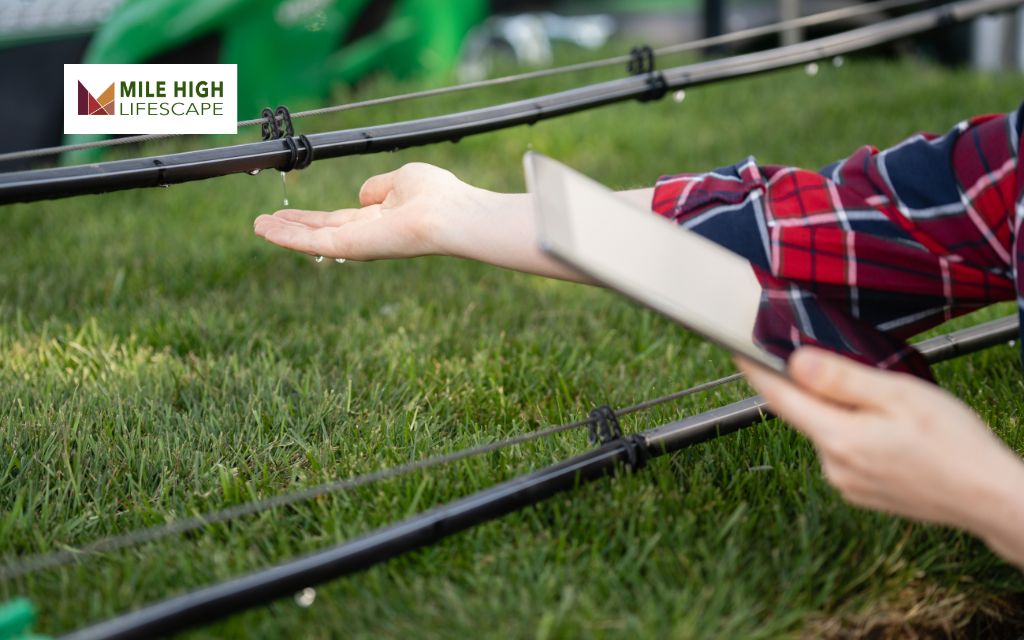
Pros of Sprinklers System
Convenience
A big reason many people choose an irrigation system is because it’s easy to use. Not everyone wants to spend time watering their lawn and garden by hand every week. With an automatic system, you can set a schedule, and it will water your lawn for you, saving you time and energy. Plus, you can go on vacation without worrying about who will water your garden.
Consistent Watering for a Healthy Lawn
An irrigation system also makes sure your lawn gets the right amount of water at the best times. Most people agree that early morning is the best time to water because it helps reduce evaporation, giving your grass and plants more time to absorb the water. Watering at night could cause problems, like fungus and diseases, because the moisture stays on the lawn too long.
With rain and moisture sensors, an irrigation system can make sure each part of your lawn gets the perfect amount of water. This helps you avoid overwatering, which can be as bad for your plants as underwatering.
Saving on Water Costs
One of the benefits that people don’t always think about is saving money on water. Watering in the morning means less water will evaporate, so you don’t need as much.
Also, with an irrigation system, you can use different sprinklers for different parts of your yard, which helps avoid wasting water. For example, a soaker hose can water your garden with less water than a big sprinkler, keeping things efficient.
Better Home Value
An irrigation system can also add value to your home. It’s a feature that many buyers look for because it helps keep your yard healthy and beautiful, improving your home’s curb appeal.
Cons of Sprinklers System
Potential Issues with Irrigation Systems
While irrigation systems are helpful, they come with some challenges. One of the biggest factors to think about is the cost of setting up the system and keeping it running smoothly. These systems have a lot of moving parts, which may need fixing or adjusting over time.
For example, sprinkler heads can get misaligned and might need to be adjusted to ensure they cover the right areas. Sometimes, they can even get damaged during regular yard work, like mowing, and may need to be replaced completely.
Creating Watering Zones
A professional team will visit your home and map out the areas of your lawn and garden that will need watering. These areas will be divided into “zones,” and each zone will have its own watering needs.
The team will decide which type of sprinklers to use, depending on the zone. For example, your lawn might need sprinklers that water in a circle, while garden areas may need special sprinklers to gently water delicate plants.
Digging and Installing
Once the plan is ready, the team will dig trenches in your yard to lay down the pipes that will carry water. They will also install control boxes in certain areas to manage the water flow.
After everything is in place, the pipes will be connected to the main water supply in your home. Once the system is ready, the team will fill in the dirt and replace any plants that were moved, so your yard can start growing again.
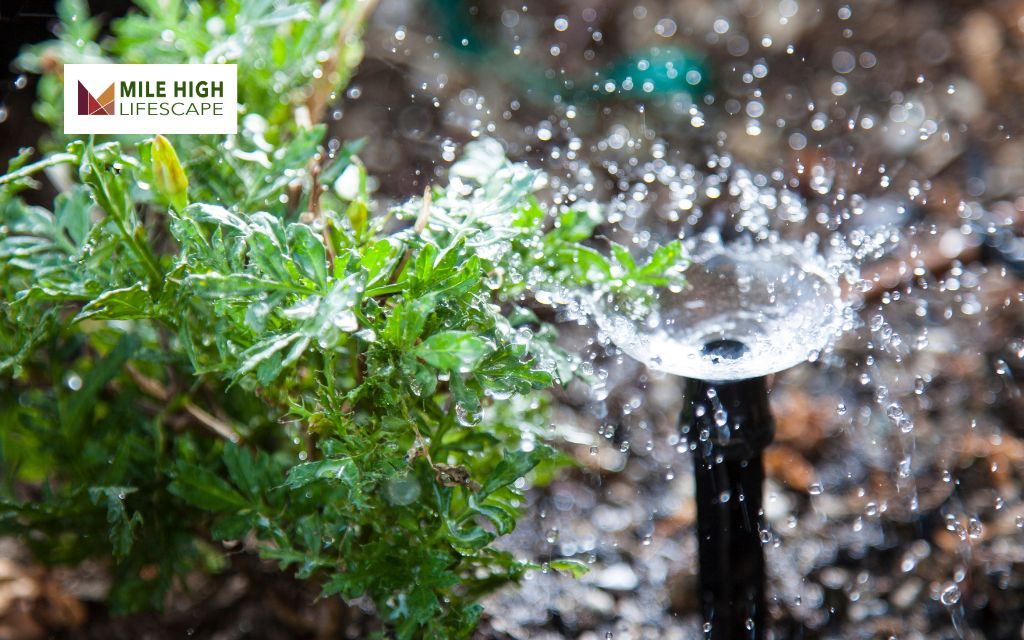
How To Choose Drip Irrigation vs Sprinkler Systems?
When deciding between drip irrigation vs sprinklers, it’s important to think about your specific needs. Here are some things to keep in mind:
- Type of plants: Drip irrigation is perfect for watering individual plants or small gardens, while sprinklers are better for large lawns or bigger areas like fields.
- Water source: Drip irrigation works best with a steady water supply, while sprinklers can use different sources, like well water or city water.
- Budget: Drip irrigation might cost more to install at first, but it can save you money over time because it’s more water-efficient. Sprinklers are cheaper to install, but they may cost more to maintain in the long run.
- Climate and terrain: Drip irrigation is great for hot climates or hilly areas because it targets the water exactly where it’s needed, reducing water loss. Sprinklers work well for flat areas and can cool the air during hot weather.
In the end, the best choice depends on what you need for your lawn or garden. Both systems can water your plants effectively and keep them healthy, so think about what works best for your space and budget!
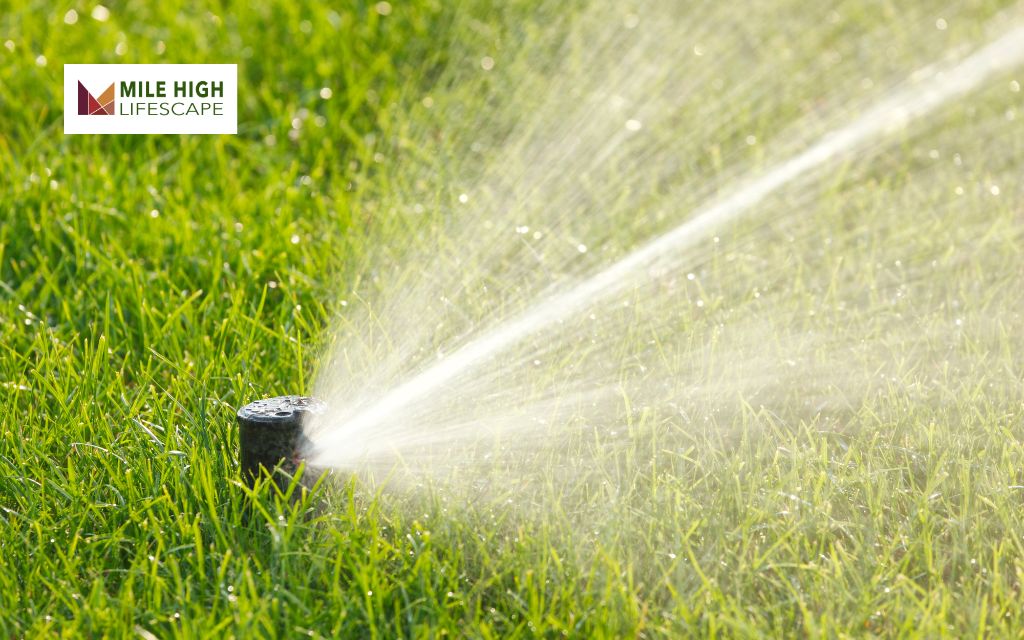
Drip Irrigation vs Sprinklers: Which Is Better for Different Lawn Types?
When deciding between drip irrigation vs sprinklers, it’s important to think about the type of lawn or garden you have. Different landscapes need different watering methods to keep everything healthy and save water. Here’s a quick guide on which system works best for different types of areas:
Flower Beds and Vegetable Gardens
Drip irrigation is the best choice for flower beds and vegetable gardens. It delivers water straight to the roots, which reduces water waste and evaporation. The steady drip keeps the soil moist without overwatering, which helps prevent plant diseases. Plus, it avoids splashing water onto leaves, which is especially good for sensitive plants like tomatoes and roses.
Residential Lawns
For residential lawns, sprinklers are usually the way to go. They spread water evenly across large areas, making sure your whole lawn gets the moisture it needs. Whether you choose traditional oscillating sprinklers or high-tech smart systems, sprinklers are great for even grass growth. Programmable timers can help avoid overwatering and make the system more efficient.
Sloped or Uneven Terrain
If your property is hilly or uneven, drip irrigation is a better choice. Water from sprinklers can run off on slopes, leading to uneven watering and possible soil erosion. Drip irrigation slowly delivers water, letting it soak into the ground without running off. This method works well for gardens on hills or areas with different elevations.
Commercial Properties
For commercial landscapes with a mix of lawns, flower beds, and decorative plants, using both drip irrigation and sprinklers together works best. Sprinklers handle the large grassy areas, while drip irrigation targets the flower beds and shrubs. This combined approach helps save water and keeps all the plants well-watered.
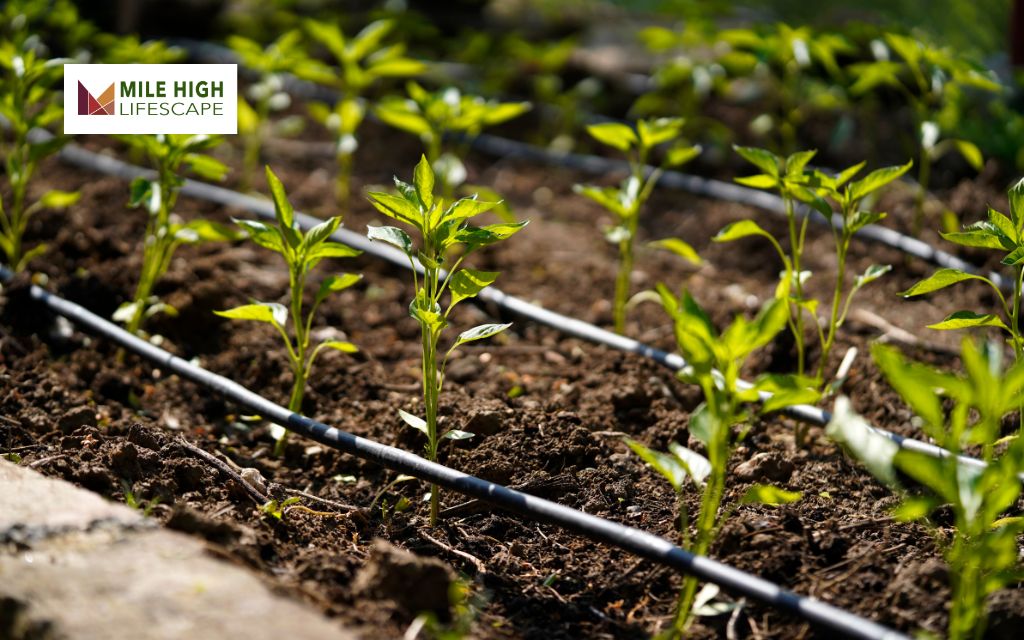
FAQs About Drip Irrigation vs Sprinklers
Is drip irrigation better than sprinklers?
Drip irrigation is great for watering plants directly at their roots, reducing waste and helping them grow healthier. It’s perfect for smaller areas like gardens and individual plants. Sprinklers, on the other hand, are better for covering larger lawns efficiently. The right choice depends on your landscape’s needs.
What are the advantages of drip irrigation over sprinklers?
- Water Efficiency: Drip systems focus on watering the plant roots, so there’s less water lost through evaporation or runoff.
- Reduced Weed Growth: Drip irrigation targets only the plants you want to water, leaving weeds with less water to grow.
- Energy Savings: Since drip systems work at low pressure, they can help save on energy costs.
Can I install both systems in my yard?
Yes! You can use both. Sprinklers are great for watering large lawns, while drip irrigation works well for garden beds, shrubs, and areas with plants that need specific care. Using both systems helps make sure you’re using water efficiently in different areas of your yard.
How do I know which system my lawn needs?
Take a look at your landscape:
- For big, open grassy areas, sprinklers work well.
- For garden beds, shrubs, or plants that need different amounts of water, drip irrigation is the way to go.
Talking to a landscaping expert can help you choose the right system for your yard.
Which system is more cost-effective in the long run?
Drip irrigation might cost more to set up, but it saves money by using less water and lowering energy bills over time. Sprinklers are cheaper to install, but they can use more water, which could raise your water bills. By considering factors like water costs, how big your yard is, and how much maintenance each system needs, you can figure out which one is the most cost-effective for you.
Conclusion
Choosing between drip irrigation vs sprinklers depends on your lawn’s size, plants, and water needs. Drip irrigation saves water and works best for gardens and flower beds, while sprinklers are great for larger lawns. Both systems have pros and cons, but the right choice will help your lawn stay healthy and green. Need expert advice? Mile High Lifescape can help you pick and install the perfect system for your yard.
